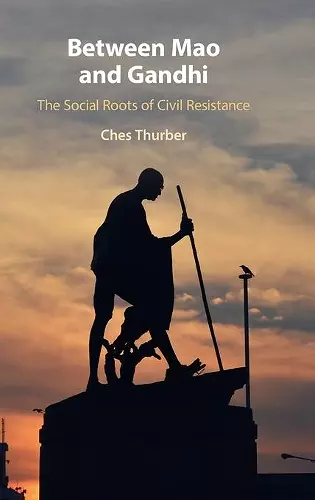Between Mao and Gandhi
The Social Roots of Civil Resistance
Format:Hardback
Publisher:Cambridge University Press
Published:30th Sep '21
Currently unavailable, and unfortunately no date known when it will be back
This hardback is available in another edition too:
- Paperback£25.99(9781108927840)

Asks why some dissident movements adopt nonviolent strategies of resistance, while others choose to take up arms.
Civil resistance campaigns have proven capable of toppling regimes and bringing about revolutionary political change. But how do dissidents come to embrace a nonviolent strategy in the first place? Thurber examines the social underpinnings of challenger movements to understand how they perceive, evaluate, and decide upon strategies of resistance.From Eastern Europe to South Africa to the Arab Spring, nonviolent action has proven capable of overthrowing autocratic regimes and bringing about revolutionary political change. How do dissidents come to embrace a nonviolent strategy in the first place? Why do others rule it out in favor of taking up arms? Despite a new wave of attention to the effectiveness and global impact of nonviolent movements, our understanding of their origins and trajectories remains limited. Drawing on cases from Nepal, Syria, India and South Africa, as well as global cross-national data, this book details the processes through which challenger organizations come to embrace or reject civil resistance as a means of capturing state power. It develops a relational theory, showing how the social ties that underpin challenger organizations shape their ability and willingness to attempt regime change using nonviolent means alone.
'In this book, Ches Thurber explores why movements challenging state power adopt violent or nonviolent strategies of resistance. Thurber argues this variation can be traced back to the structure of social networks and connections within which these movements are embedded and provides extensive supporting evidence from Nepal, Syria, and cross-national data. This is a first-rate contribution to answering a fundamentally important question.' Paul Staniland, Associate Professor of Political Science, The University of Chicago
'In Between Gandhi and Mao, Thurber takes on a critical question: if nonviolent resistance is more effective, why do many groups still choose armed warfare? Through careful analysis of revolutionary struggles in Nepal and Syria he reveals that movements can only successfully implement nonviolent strategies when there are sufficient social ties among various sectors of the population and the regime. Thurber's book is theoretically sophisticated, empirically rich, beautifully written, and sheds important light on revolutionaries' strategic decision-making processes. It marks an important advance by bridging the study of civil war and civil resistance.' Sharon Erickson Nepstad, Chair and Distinguished Professor of Sociology, University of New Mexico, and author of Nonviolent Struggle: Theories, Strategies, and Dynamics
ISBN: 9781108844062
Dimensions: 235mm x 158mm x 20mm
Weight: 560g
260 pages